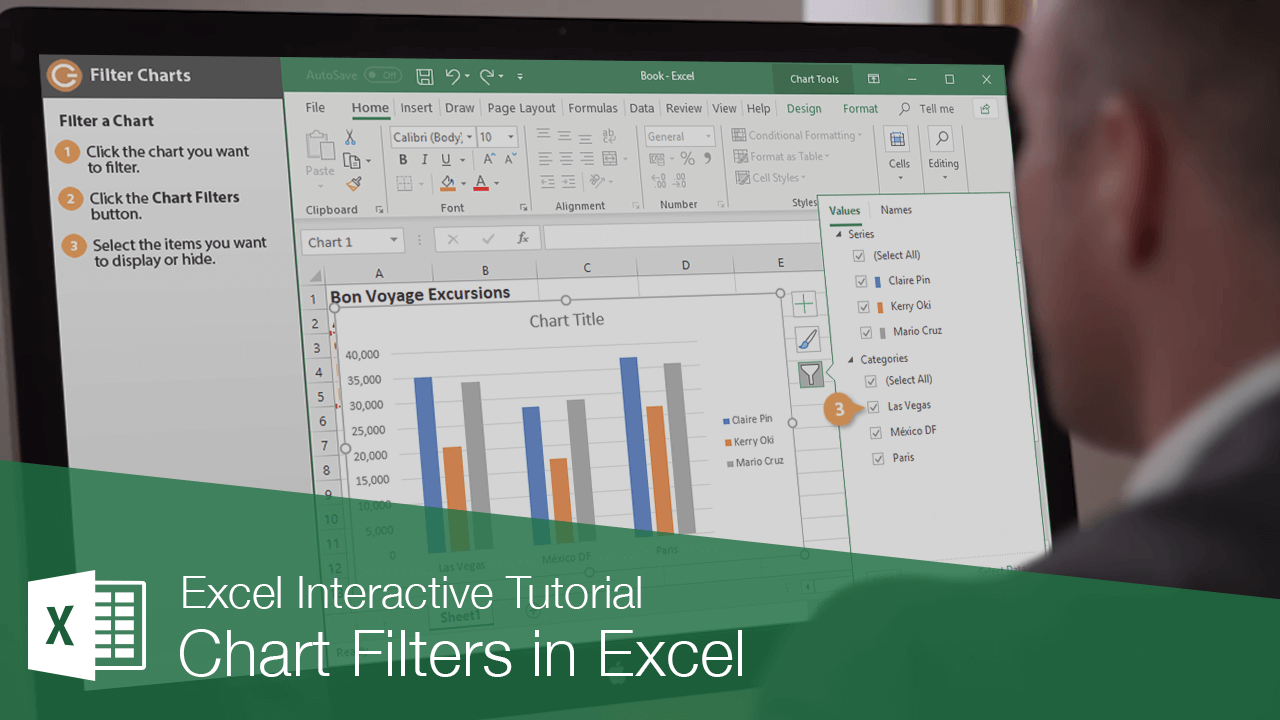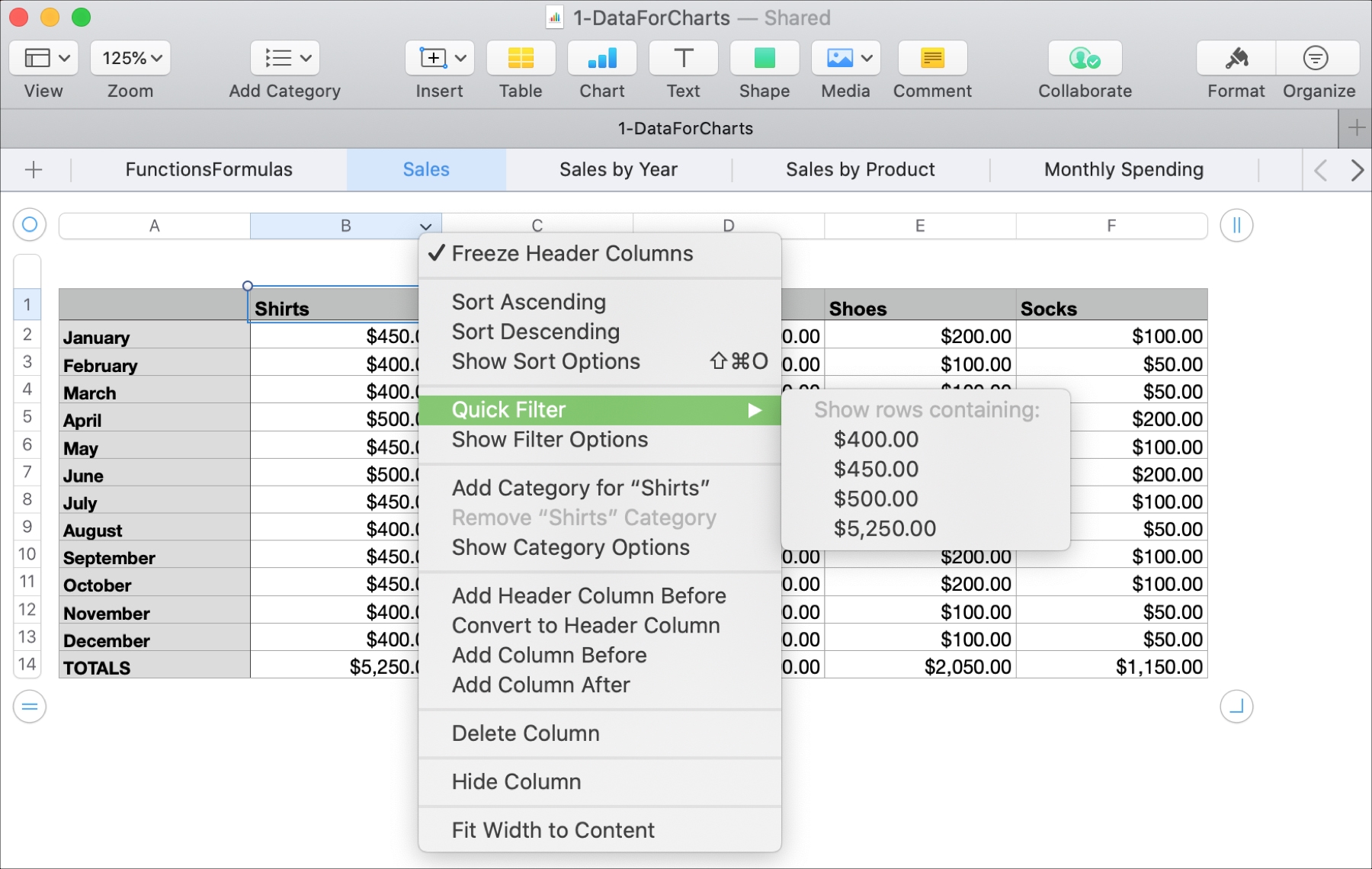

- #How do you apply chart filters on excel for mac how to#
- #How do you apply chart filters on excel for mac Pc#
- #How do you apply chart filters on excel for mac series#
And yet, until I viewed this presentation by Ian Lurie, I was blissfully oblivious to gridlines in charts. If you have read just about anything I’ve written about Excel, you’ll know I loathe gridlines in tables. When you’re presenting data, it’s very important to reduce the noise and hone in on actionable signals. Remove Noise From Your Chart’s Background
#How do you apply chart filters on excel for mac Pc#
If you want a primer, you can find this resource from Microsoft for the PC and this one for the Mac. I’m not going to cover the basics of creating charts in this post.
#How do you apply chart filters on excel for mac how to#
For more advanced filtering capabilities, check out PivotCharts which enable you to aggregate, filter, and pivot with ease.Having covered all the basics of how to make tabular data tell a story using custom cell formatting and conditional formatting for both static tables and pivot tables, we’re now going to jump into the really fun stuff: charting data out in Excel. The new Excel brings powerful ways to visualize and interact with your data.
#How do you apply chart filters on excel for mac series#
The chart reflects your changes.Įxperiment with the filter pane by trying to filter out both series and category and see how quickly you can drill down to the data you need. Under Series, uncheck Cost/lb, and then click Apply. To get the same view we created in our earlier chart, we’ll hide the Cost/lb column. For example, hover over Fruit Pear and see how the category is highlighted. Select the chart, then click the Filter icon to expose the filter pane.įrom here, you can filter both series and categories directly in the chart. The on-object chart controls in Excel allow you to quickly filter out data at the chart level, and filtering data here will only affect the chart-not the data. But sometimes you have multiple charts to filter that are based on the same range or table. So far, all of the options we’ve looked at hide the data directly from the worksheet. To clear the filters, click the Clear Filter icon. To select multiple foods, hold down the Ctrl key and then click your desired items. To filter, click an item under the Food heading and then see the chart and table update. Now we have a slicer linked to both our table and our chart. Click Insert Slicer, check the box next to Food, and then click OK. On the Ribbon, select the Table Tools Design tab. To create a slicer, first click anywhere inside the table. In this example, we’ll create a table slicer to compare specific produce costs and profits. For more information, check out this post that dives into the details of table slicers. This allows you to easily click through your data to visualize different segments. Table slicers create a filtering experience with buttons as part of your worksheet. This would be extremely useful if we had the whole produce section in our table. Try exploring more filtering options by trying different combinations of filters, and be sure to give the search bar a try. Uncheck the out-of-season items, then click OK. To reveal the filter, click the down arrow next to Food. Now that we have a table, we’ll filter the out-of-season produce. Tables allow you to easily format, sort, filter, add totals, and use formulas with your data. Select your data range, and then click the Quick Analysis tool. If you want to filter out specific foods from your chart, you can turn your grid data into a table, which provides filtering for each row. The series is now visible and on the chart once again. Note: You also can also unhide by holding left-click on the right edge of the hidden column header and dragging it to the right. Now right-click the highlighted columns, and then click Unhide. To do this, select both columns C and E by clicking the C column header and dragging it to column E. If you want to show the cost data again, unhide the column. Notice the grid header hints the hidden column. To hide the coulmn, right-click the column header containing Cost/lb and then select Hide. I can hide the entire column and it will be reflected in the chart. Now I want to completely remove Cost/lb from this chart to focus completely on the profit.

You can add your own title by clicking on the chart title, which will allow you to edit the text. Note: For this example, I added the chart title Produce Sales. Now select Charts, and then click Clustered Column. To create the chart, select the range, then click the Quick Analysis tool. Let’s say we’re running a produce stand at a farmers market and want to understand our cost and profit on our sales.


 0 kommentar(er)
0 kommentar(er)
